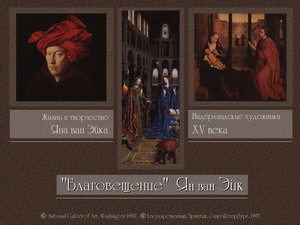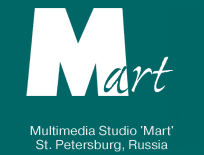'The Annunciation' of Jan van Eyck

Every picture, like every person, has its own history – long or short, simple or complex; sometimes it can even become the basis for a detective story. The picture shown in this programme has a history that is far from simple: it is at present in the National Gallery in Washington, but before ending up there it travelled widely through the world and spent almost two centuries hanging on the walls of the Winter Palace in St Petersburg.
This pearl of the Hermitage’s collection was sold by the Soviet government at the beginning of the 1930s. All attempts to keep the picture in Russia failed. In 1997 the “Annunciation” returned, albeit briefly, to the Hermitage. The picture was received like an important personage, a separate place of honour was prepared for it, and (probably for the first time in Russian museum history) a special multi-media programme was created to accompany it. The programme was set up in the immediate vicinity of the place where the masterpiece was displayed, and visitors could be provided with detailed information about the picture immediately after looking at it.
Many circumstances combined to make the multi-media programme an important part of the exhibition. Firstly, the subject of the Annunciation is a popular one in the world’s art: many artists have depicted this Biblical scene. It was important to display this iconography to spectators – works from various schools of art devoted to one and the same subject. Secondly, van Eyck’s picture contains a considerable number of religious and artistic symbols: for a spectator without specialist knowledge it would have been difficult, without a commentary, to appreciate the artist’s conception. And finally, the actual fate of this masterpiece – its wanderings from one collection to another – is of such a dramatic nature that it was inevitable that a historical commentary should form an important part of the exhibition.
The information was presented to spectators in two formats: a multi-media film and an interactive “information kiosk”. The multi-media film ran non-stop for visitors to view. It provided a detailed account of the history of the picture’s creation, a geography of its travels, and an account of how the picture’s subject and composition reflected the artist’s conception. If, after watching the film, the visitor felt the need of further factual or illustrative information, he or she could find it through the interactive part of the programme, in which there was also a detailed treatment of the picture’s subject and interpretations were given of all the features of the picture possessing a symbolic meaning.
Unfortunately it is no longer possible to view this programme: it was created for a temporary exhibition and its public existence ceased when the exhibition was over. But while it existed many visitors were grateful to the Hermitage for this unusual and highly professional approach to the presentation of a masterpiece.


